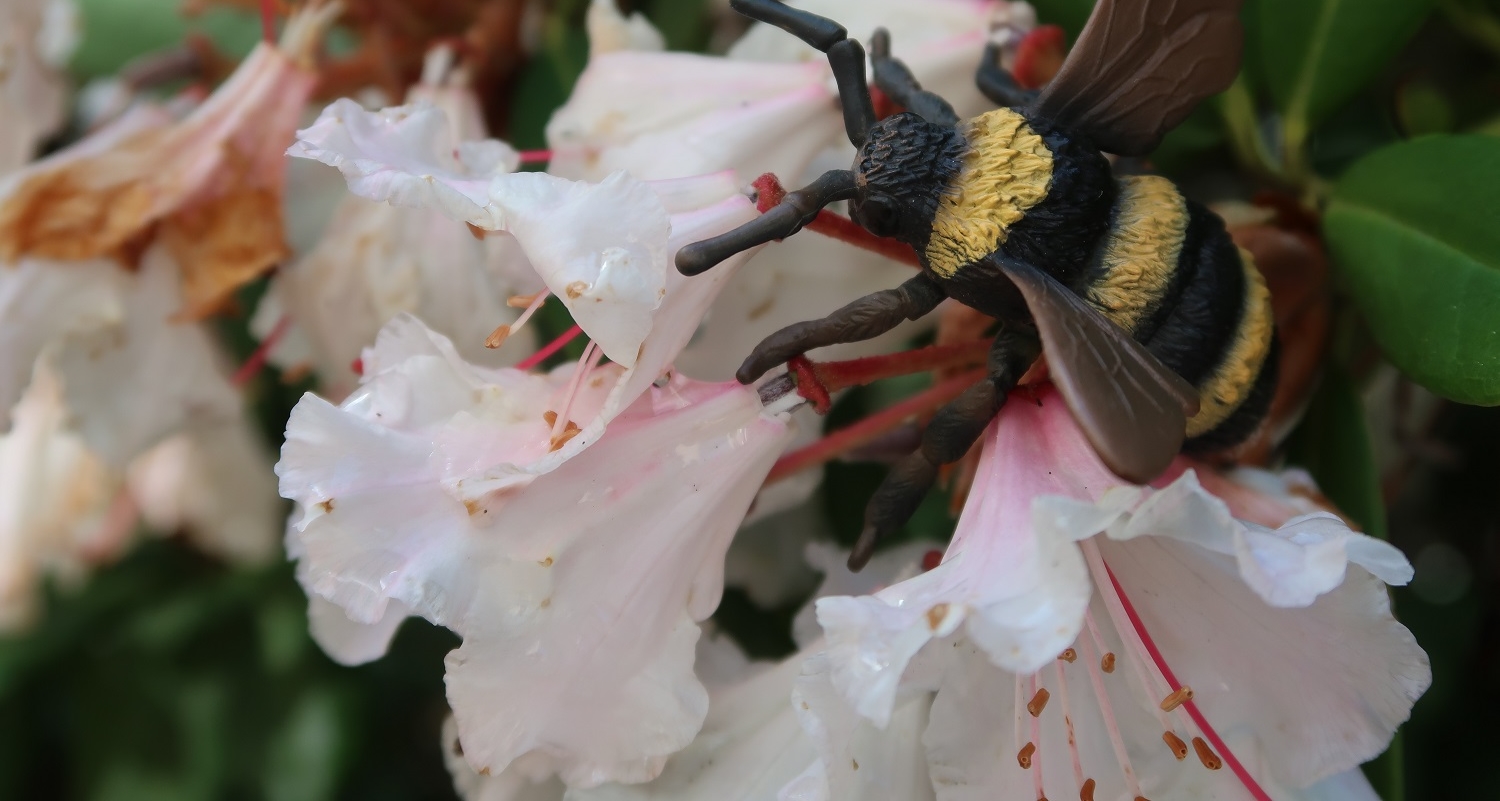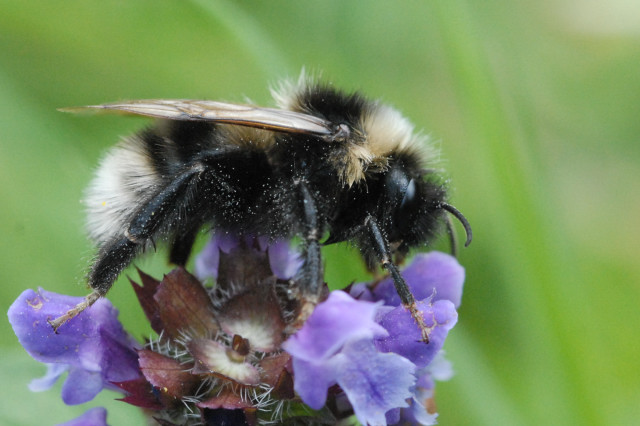
James Lindsey image, Ecology of Commanster.
…the Short-haired Bumblebee…a casualty of war
Here – near to my Canadian home, I look forward to their annual arrival and watch their fuzzy selves hover-skip from flower to flower. I enjoy their delicate quest and watch for some while their gentle buzzing about. If I am lucky they willingly pose for the camera. Sometimes the bumbles may dart at low level making their way to another signal they have received. I wonder what this language is?
Colourful, large and fuzzy…their work is considerably important to all humanity. They are of the kind…the pollinators…without them there would be no crops, no wildflowers. Honeybees too are important, but bumbles can fly in cooler temperatures and operate with lower light levels. Honeybees and associated beekeeping was declared a war essential and beeswax was used to replace petroleum products to waterproof ammunition and as a replacement for sugar, which was rationed.
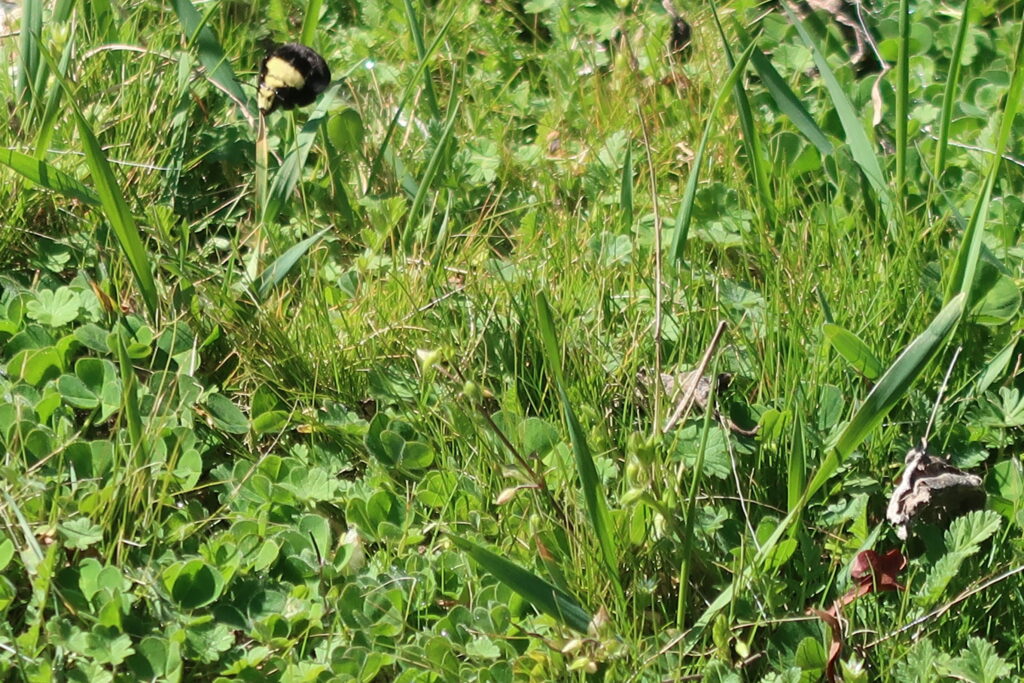
P. Ferguson image, March 2019.
However, for Short-haired bumblebees in the United Kingdom, the Second World War meant their extinction due to the loss of habitat for the creation of Victory Gardens – the great Dig for Victory campaign. Food shortages led to a massive program to create allotments for the production of food and with the loss of hedges and many wildflower stands this species was doomed in the United Kingdom. The bumblebee’s habitat further declined after the Second World War ended.
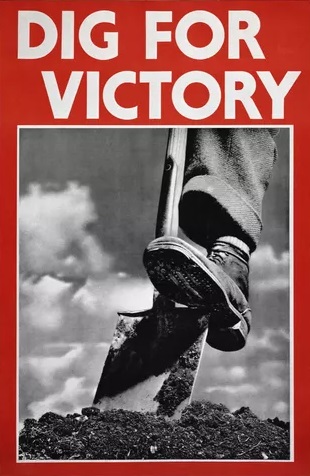
Dig For Victory
The digging of allotments in Britain turned considerable patches of land into food producing bounties. Waste-lands, castle moats, golf courses, sports fields, railway lands, apartment rooftops, backyards, ornamental gardens and lawns fell to the shovel, hoe and cultivator. In 1943 it was estimated that 1,400,000 allotments were growing food across the countryside, the cities and in the suburbs. Some of the best known London victory gardens were established at the Tower, Hyde Park, the Albert Memorial and Buckingham Palace.
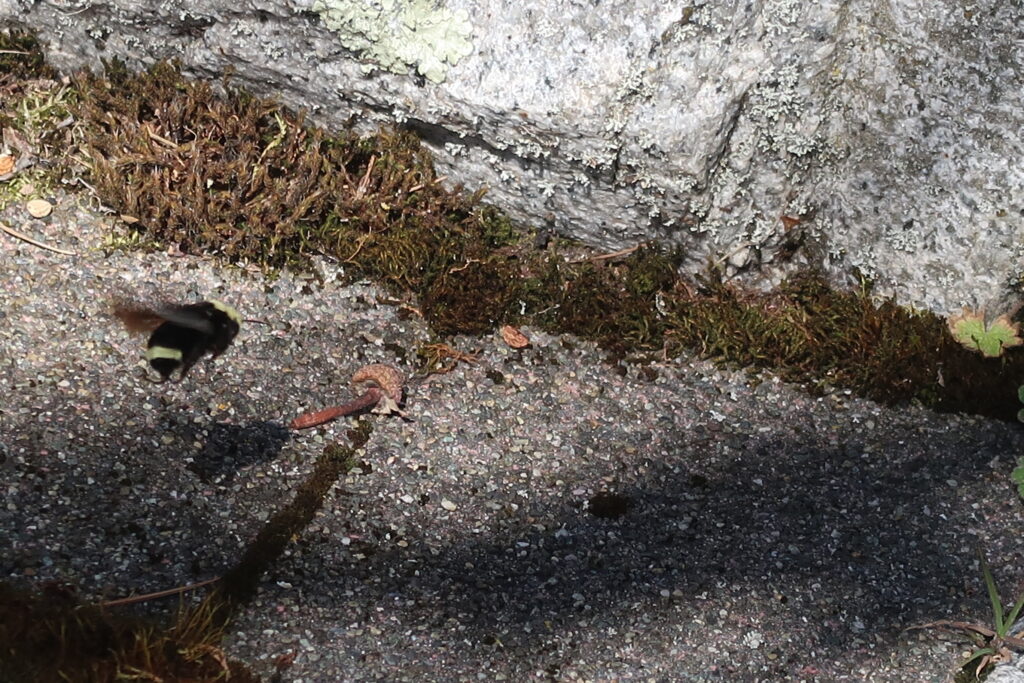
P. Ferguson image, March 2019.
Considerable information brochures were produced to encourage potential growers, these Dig for Victory brochures include, Vegetable Production, Better Fruit, Potato Growing in Allotments, Roof and Window-box Gardening, Garden Pests, Making the Most of Small Plots, Manure and Growmore bulletins entitled Preserved from the Garden, Pests and Diseases and Dung Must Not Be Wasted.
Films were also produced to encourage the rationed citizenry to dig…to plant…to harvest. Amongst these titles, Dig for Victory, Children’s Allotment Gardens, Compost Heaps for Feeding, and Blitz on Bugs.
An April 2013 Daily Mail article by Dave Goulson documents his travel to New Zealand with botanist Mike Hanley where they collected a Short-haired bumblebee…a descendant of one of the Victorian United Kingdom bumblebees sent to New Zealand to pollinate their crops. Their quest, to reintroduce the short haired bumblebee to the United Kingdom commenced in 2003. His work further notes the extinction of two other types of bumblebees…Cullum’s Bumblebee and the Apple Bumblebee. Sadly, these two species of bumbles are believed to be forever lost to this shared planet Earth. Goulson further notes 25 extant species of bumbles. Ten years ago, in May 2012, the first Short-haired bumblebees were reintroduced to the United Kingdom. Long may they buzz about.
For further information see the Bumblebee Conservation Trust established by Dave Goulson and/or his book, A Sting in the Tale (2013).
